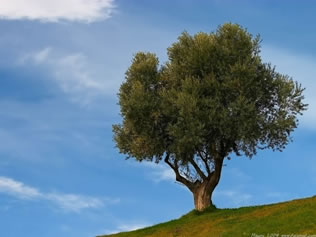Culture of Olivo
The olive tree is a rustic tree, that admits a semi-arid climate and fertile and little superficial grounds, although in these conditions the productivity is low. When they are applied suitable agronómicas techniques improve the vegetation and the production. Sometimes one says that the culture has been following just as for two millenia; nevertheless, at the present time the oleicultor has numerous techniques that demonstrate that the progress has also affected to this culture of artisan base and so remote origin. The plantation of a modern olive grove must take place in fertile ground or. at least, with aptitude for this culture, choosing the variety and the density that is deduced after an analysis of means and the objectives to obtain.

The culture of the olive tree is based fundamentally on the following aspects: a pruning provided with the age, the variety and the vegetative state; the accomplishment of workings to the land or the maintenance of the ground by methods without working; the fertilization to the ground, or by via foliar, or the combination of both; the fitosanitarios controls; the irrigation of plantations in zones with rainfall deficit.
The harvesting must be made when most of the oil is formed, which does not agree with the moment of greater proportion of oil in the fruit. The disappearance of green olives in the tree, that usually agrees most of with the fruits in envero, is the moment adapted for the beginning of the operation. In most of the regions the collection is made by hand, in others with the help of twigs and in some the systems of mechanized demolition begin to be used, specially vibrating. The sweeping of the fruits fallen by means of equipment or machines, the use of vacuum cleaners, along with the mechanical application of cleaners and washing machines to clear the strange bodies that accompany the olives, completes the last tendencies in the collection of the olives.

 Spanish
Spanish  English
English Our Company
Our Company






